|
Subpage beetles:
Ground
beetles (Carabidae)
Leaf
beetles (Chrysomelidae)
Snout
beetles, weevils
Longhorn
beetles, similar to longhorn beetles
Ladybirds,
Ladybugs, Coccinellidae
Rove
beetles (Staphylinidae)
Small
beetles
 Nederlands /
Dutch Nederlands /
Dutch
Beetles in the garden
I have made subpages of some families. On this page I have placed a photo of
one species of the family and a link.
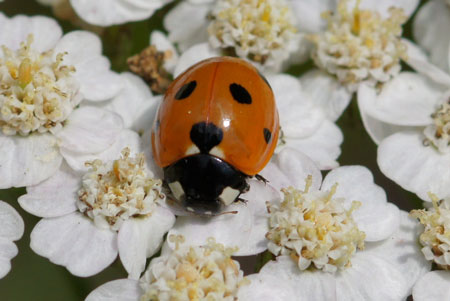 Seven-spot ladybird, Seven-spotted ladybug (Coccinella
septempunctata)
Seven-spot ladybird, Seven-spotted ladybug (Coccinella
septempunctata)
|
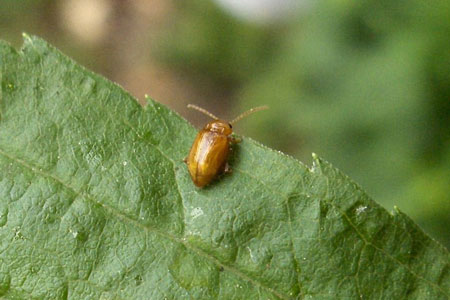 Flea beetle
Asiorestia spec - Neocrepidodera spec. Family leaf beetles
Chrysomelidae.
Flea beetle
Asiorestia spec - Neocrepidodera spec. Family leaf beetles
Chrysomelidae. |
 Corymbia
rubra Leptura rubra and Stictoleptura rubra are former
scientific names.
Corymbia
rubra Leptura rubra and Stictoleptura rubra are former
scientific names.
|
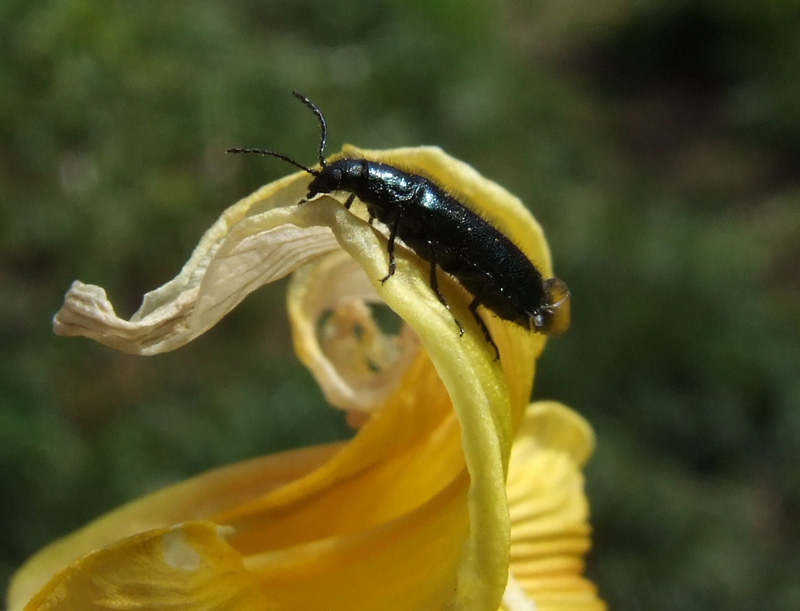 Dasytes cyaneus.
Family Dasytidae. It looks like a small longhorn beetle.
Dasytes cyaneus.
Family Dasytidae. It looks like a small longhorn beetle.
|
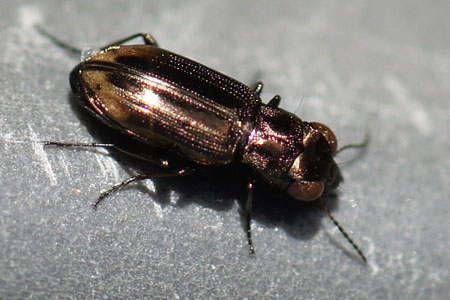 Notiophilus spec.
Family Ground beetles (Carabidae).
Notiophilus spec.
Family Ground beetles (Carabidae). |
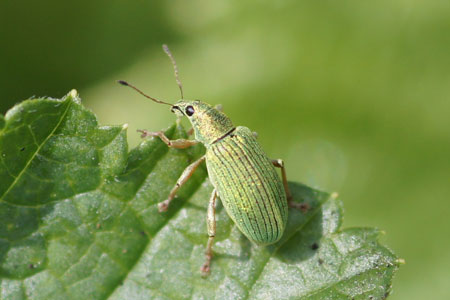 Polydrusus
sericeus
Subfamily: Brachyderinae. Family Curculionidae
Polydrusus
sericeus
Subfamily: Brachyderinae. Family Curculionidae
|
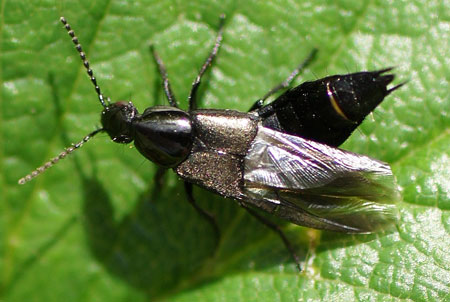 Philonthus spec. Family Rove beetles (Staphylinidae)
Philonthus spec. Family Rove beetles (Staphylinidae)
|
 Ptilinus pectinicornis. Family Anobiidae. All families, mainly of small beetles on a
subpage.
Ptilinus pectinicornis. Family Anobiidae. All families, mainly of small beetles on a
subpage.
|
In the water:
Dytiscidae.
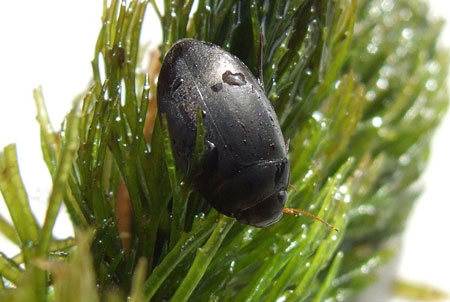 .. ..
 . .
 . .
 Diving beetles, Predaceous
water beetles, Dytiscidae.
Diving beetles, Predaceous
water beetles, Dytiscidae.
This family is related to the ground beetles. Besides they can swim,
they can fly too. The body has a streamlined shape. They store air under the elytra (the space between the abdomen and the
elytra) They have no gills.
The larvae are also carnivores and aquatic. The beetles usually overwinter.
Sometimes I see a water beetle in the pond. But this was the first I found
in the landing net, when I removed the leaves out of the pond. Photos beetle 13/3/2010 Length: 10 mm.
It is mot easy to determine the dark water beetles from a photo. It may be one
the family Agabus or of the family Ilybius. The beetle looks like a Agabus
bipustulatus. |
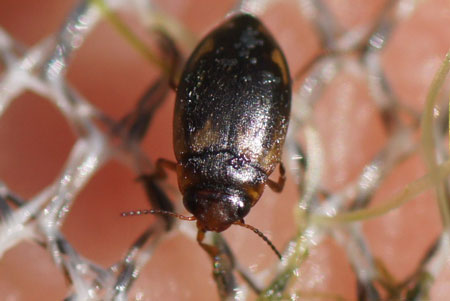 .. ..
 Hydroporus palustris. Family predaceous diving beetles
(Dytiscidae).
Hydroporus palustris. Family predaceous diving beetles
(Dytiscidae).
There are a lot of these small beetles in our pond.
Most likely Hydroporus palustris, because
that's a common beetle in the Netherlands. The resembling Hydroporus species
are rare.
The upper side is dark brown with brown yellow spots (variable), the underside is black.
They feed on small invertebrates. The adult beetle overwinters under water.
Length about 3,5 mm. Palearctic. Photos: 6-6-2012.
German: Sechsfleckige Zwergschwimmer, Gemeine
Zwergschwimmer. |
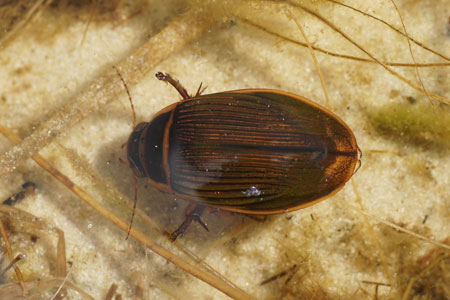 .. ..
 Dytiscus spec. Family predaceous diving beetles
(Dytiscidae). Not in the garden, but in small a dune lake about 4 miles from our house.
Dytiscus spec. Family predaceous diving beetles
(Dytiscidae). Not in the garden, but in small a dune lake about 4 miles from our house.
I do not know the species. Dytiscus marginalis is
common, but there are more Dytiscus species in the Netherlands. Namely: Dytiscus
circumflexus, Dytiscus dimidiatus. Rare: Dytiscus circumcinctus, Dytiscus
lapponicus. Very rare: Dytiscus latissimus, Dytiscus semisulcatus.
In Europe, Asia, North Africa and North and Central America are 26 species in this genus
The differences you can see on the underside. It has a yellow border. The elytra of the females usually have grooves,
the elytra of the males are smooth.
The larvae and beetle are predators.
The length of this beetle I guess about 3 cm. A large beetle.
Photos: 11-9-2012. |
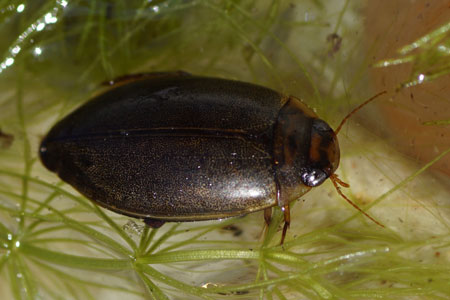 .. ..
 Rhantus suturalis. Family predaceous diving beetles
(Dytiscidae).
Rhantus suturalis. Family predaceous diving beetles
(Dytiscidae).
It looks dark brown, but as can be seen on this photo, the elytra are golden yellow with a dense black punctuation. A pale yellow coloured edge and a diamond-shaped spot on the neck shield. The underside is black.
Length 10.5-12.5 mm. Photos: 25-6-2019. |
Helophoridae - Hydrophilidae.
From
2 to 9 mm.
Many similar species. Holarctisch.
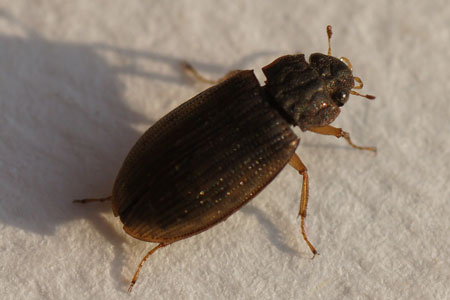 .. ..
 . .
 . .
 . .
 Helophorus Helophorus grandis or Helophorus
aequalis Family Helophoridae.
Helophorus Helophorus grandis or Helophorus
aequalis Family Helophoridae.
Helophorus ís the only genus in the beetle family Helophoridae (traditionally included within Hydrophilidae as the subfamily
Helophorinae).This
beetle
(6 mm)
I saw in the pond
on a leaf.
I recognized it
as Helophorus.
But I
had to
askspecies.
Ton van Haaren.:
Helophorus grandis
or Helophorus
aequalis. They
are very similar. Thanks
Ton.
It lives in water,
it is
therefore not as
well adapted in
terms of body
shape such as
the Dytiscidae.
The body is
elongated,
but is
interrupted between
pronotum and
elytra.
The pronotum has irregular, longitudinal grooves.
You'll find them
near
the water plants.
They can fly. After
the photo
left,
this beetle
flew away. Photos: 9-11-2011. |
Hydraenidae.
A family of small aquatic beetles with clubbed antennae. They do not swim well and are generally found in marginal vegetation.
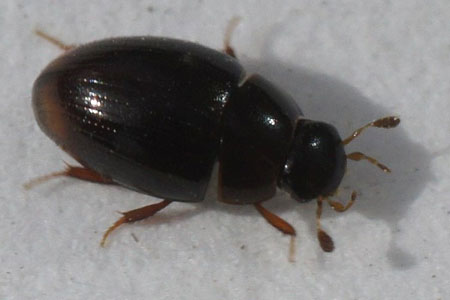 .. ..
 . .
 . .
 Cercyon spec. Subfamily Sphaeridiinae. Family
Hydraenidae.
Cercyon spec. Subfamily Sphaeridiinae. Family
Hydraenidae.
Maybe Cercyon analysts, but that is not certain.
I found it on the compost heap. Less than 3 mm. In Europe there are known 23
species. They are all very small.
They live in manure, compost and in marginal
vegetation. Photos: 14-4-2013. |
Not in the water:
Darkling beetles (Tenebrionidae).
In some websites, books you see, that the Tenebrionidae family is subdivided into subfamilies as Lagriinae (for example Lagria) and Alleculinae (for example Cteniopus sulphureus). Others create separate families: Lagriidae and Alleculidae. It's very confusing.
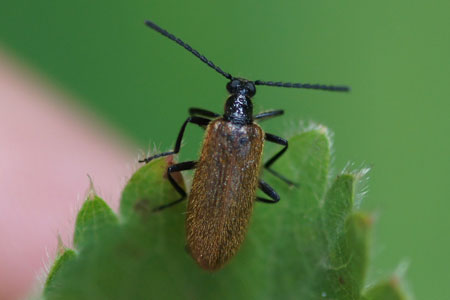 .. ..
 . .
 Lagria
hirta
or Lagria
atripes. Two very similar species. Subfamily Lagriinae. Family Darkling beetles
(Tenebrionidae). At some sites you can find the family Lagriidae instead of
Tenebrionidae.
Lagria
hirta
or Lagria
atripes. Two very similar species. Subfamily Lagriinae. Family Darkling beetles
(Tenebrionidae). At some sites you can find the family Lagriidae instead of
Tenebrionidae.
Y on this
site .
They have a soft body and are rather sluggish. But they can fly. The brown
wing cases are very hairy. The head and torax is black.
They eat among other things nectar and pollen.
The larva feed on decaying matter in leaf-litter and turf.
Length:
7-10mm. Flying time: May – August.
Lagria atripes is earlier than Lagria hirta. Photos
2-7-2011 German: Wollkäfer. |
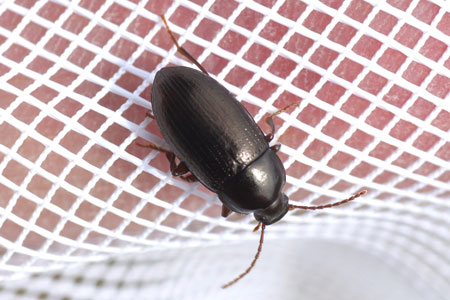 .. ..
 . .
 Nalassus laevioctostriatus. Subfamily
Tenebrioninae. Family Darkling beetles (Tenebrionidae). .Not in the garden, but in small a dune lake about 4 miles from our house.
Nalassus laevioctostriatus. Subfamily
Tenebrioninae. Family Darkling beetles (Tenebrionidae). .Not in the garden, but in small a dune lake about 4 miles from our house.
It is a shiny brown to black-brown beetle, which resembles a ground beetle.
The beetle can be found under the loose bark of oak, but also of other trees. This beetle I had, for instance
was found in a pine tree. The larvae are found in the ground with rotting wood.
The beetle feeds on green algae. Length Europe.
Photos:
4-5-2015. |
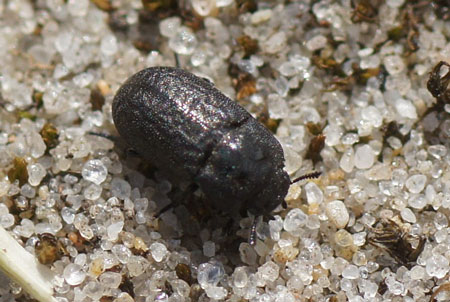 .. ..
 Melanimon tibiale, Melanimon tibialis. Subfamily
Tenebrioninae. Family Darkling beetles (Tenebrionidae). .Not in the garden, but in small a dune lake about 4 miles from our house.
Melanimon tibiale, Melanimon tibialis. Subfamily
Tenebrioninae. Family Darkling beetles (Tenebrionidae). .Not in the garden, but in small a dune lake about 4 miles from our house.
The beetles are dull black with two raised lines on the elytra. It is mostly on sandy soil for.
Length: 3-4 mm. Photos:
21-4-2013. |
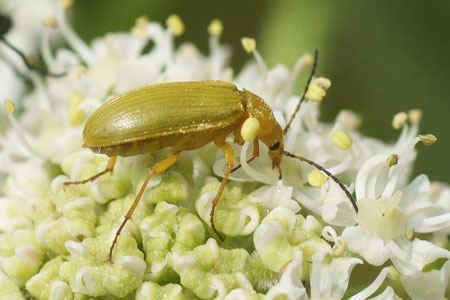 .. ..
 Sulphur Beetle (Cteniopus
sulphureus). Subfamily Alleculinae. About 1 km
from our house.
Sulphur Beetle (Cteniopus
sulphureus). Subfamily Alleculinae. About 1 km
from our house.
The elytra are pale yellow. Thorax, head and legs are orange-yellow.
In sandy areas. Netherlands they come along the coast. Often on flowers. Here
on the ordinary hogweed. The larvae feed on decaying wood, decaying plants.
Length: 7-8 mm.
Europe. Photos: 11-7-2014. |
Soldier beetles (Cantharidae)
In the Netherlands are 50 species of the soldier beetle. Another name is leatherwing. They are soft-bodied, straight sided
beetles. Named soldier
because the colour of these beetles is
similar to a 19th century army uniform.
They hunt for
small insects,
eat nectar
and pollen on the top of flowers.
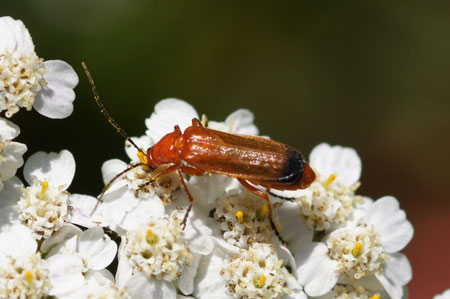 .. ..
 Common red soldier beetle (Rhagonycha
fulva). Family Soldier beetles (Cantharidae).
Common red soldier beetle (Rhagonycha
fulva). Family Soldier beetles (Cantharidae).
In July I find the
common red soldier beetles (rhagonycha fulva) everywhere in the garden. Especially
on the flowers of the parsley and celery.
This beetle is very common in Europe.
The body is red yellowish. The last bit of the elytra is black. 7-11 mm.
Large photo: 11-7-2011. |
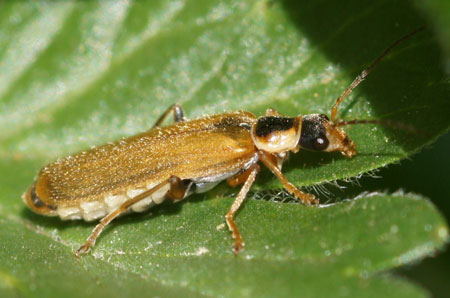 .. ..
 . .
 Cantharis decipiens. Family Soldier beetles (Cantharidae)
Cantharis decipiens. Family Soldier beetles (Cantharidae)
This is a small leatherwing / soldierbeetle. 7-9 mm.
Especially on umbellifers, in the early summer. The
larvae developing among grass and low herbage. Photos 16-5-2011. |
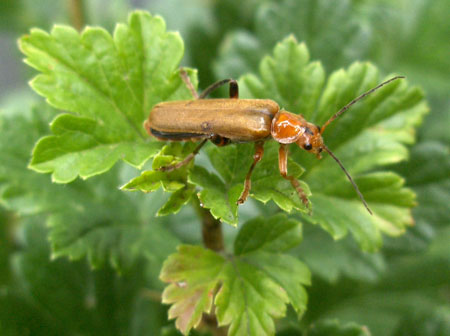 .. ..
 . .
 . .
 Soldier beetle (Cantharis).
Maybe Cantharis livida. Family Soldier beetles (Cantharidae).
Soldier beetle (Cantharis).
Maybe Cantharis livida. Family Soldier beetles (Cantharidae).
There are some very similar soldier beetles. Small photos 22-5-2011. German:
Weichkäfer.
|
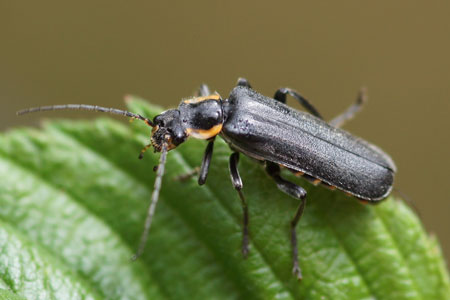 .. ..
 . .
 Cantharis obscura or Cantharis
paradoxa Family Soldier beetles (Cantharidae). Photo 16-5-2011.
Cantharis obscura or Cantharis
paradoxa Family Soldier beetles (Cantharidae). Photo 16-5-2011. |
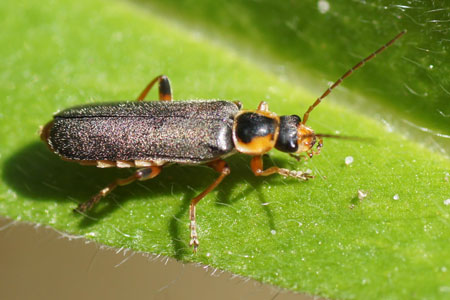 .. ..
 Cantharis nigricans.
Family Soldier beetles (Cantharidae).
Cantharis nigricans.
Family Soldier beetles (Cantharidae).
There are again some species, which are very much similar. The pronotum is variable in color. The black spot may be small or even absent. The elytra are gray. The thighs of the hind legs have a black
band (to about 1/4-1/3 of the thigh). Arp Kruithof thanks for the help! Photos 27-5-2013.
|
-5kl-2-7-2016.jpg) .. ..
 Malthinus spec Family Soldier beetles (Cantharidae). Photos
2-7-2016.
Malthinus spec Family Soldier beetles (Cantharidae). Photos
2-7-2016. |
Carrion or burying beetles (Silphidae).
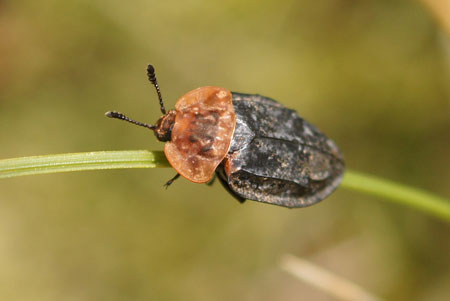 .. ..
 Oiceoptoma
thoracicum. Subfamily Nicrophorinae. Family Carrion or burying beetles
(Silphidae). Not in the garden, but in the dunes about 4 miles from our house.
Oiceoptoma
thoracicum. Subfamily Nicrophorinae. Family Carrion or burying beetles
(Silphidae). Not in the garden, but in the dunes about 4 miles from our house.
A broad flat beetle with an upturned edge all the way around.
It has a striking orange head and neck shield. The elytra are dark gray. Oiceoptoma
thoracica lives mainly on dung, carrion and rotting vegetation.
The larvae develop in there too.
Length 11-16 mm.
Palearctic.
Photos 31-3-2014. German: Rothalsige
Silphe.
|
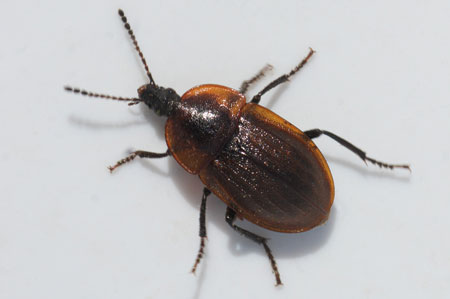 Phosphuga atrata. Subfamily
Silphinae. Family Carrion or burying beetles (Silphidae). Not in the garden, but in the dunes about 4 miles from our house.
Phosphuga atrata. Subfamily
Silphinae. Family Carrion or burying beetles (Silphidae). Not in the garden, but in the dunes about 4 miles from our house.
A flat oval black or brown brown beetle.
Both larvae and adult beetles are predators and feed on snails.
Length 10-15 mm.
Europe. Asia. Photo
31-3 |
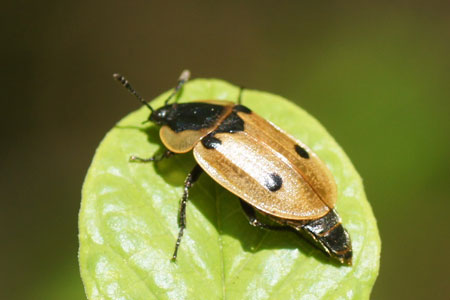 Xylodrepa
quadrimaculata. Subfamily Silphinae. Family Carrion or burying beetles
(Silphidae). Not in the garden, but in the dunes about 4 miles from our house.
Xylodrepa
quadrimaculata. Subfamily Silphinae. Family Carrion or burying beetles
(Silphidae). Not in the garden, but in the dunes about 4 miles from our house.
A flat oval yellow brown beetle. On the elytra two black spots in the middle and black spots on the
pronotum. Scutellum head and the center of the pronotum is black.
It is a predator and hunting caterpillars, larvae of sawflies and aphids.
The larvae live in the soil and lfeed on insect larvae and carrion.
April-June.
Length 12-14 mm.
Europe. Photo
5-5-2014.
German: Vierpunktige Aaskäfer, Vierpunktige Raupenjäger.
|
Scarabs, scarab beetles (Scarabaeidae)
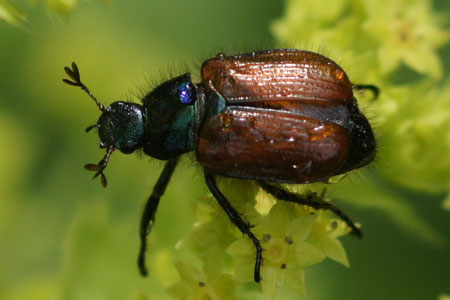 .. ..
 . .
 . .
 Garden Chafer (Phyllopertha horticola). Family scarabs, scarab
beetles (Scarabaeidae).
Garden Chafer (Phyllopertha horticola). Family scarabs, scarab
beetles (Scarabaeidae).
19
May a number of this species flew in the garden. It was difficult to take
photos because they were continuously in movement. This I had written some
years ago. I still see them every year in May in our garden.
It is a smaller relative of the Cockchafer or May Bug. It
appears on sandy soils. Garden chafers have
chestnut brown wing casings which are covered in tiny hairs. They have
fan-like antennae, like all chafers. The wing cases are chestnut brown and
are covered in tiny hairs.
After the females have deposited 70% of the eggs,
they
start a short feeding period on trees and shrubs and
cause damage to fruit trees.
The rest of the eggs are laid on another place.
Eggs have a developing time of four weeks. The larvae feed on the roods of
the grass and can cause much damage. They pupate in October and hibernate
as a pupa in the soil.
Size: Approximately 10mm long.
Flying time: May-July. German:
Gartenlaubkäfer. French: Hanneton des jardins, Hanneton horticole.
|
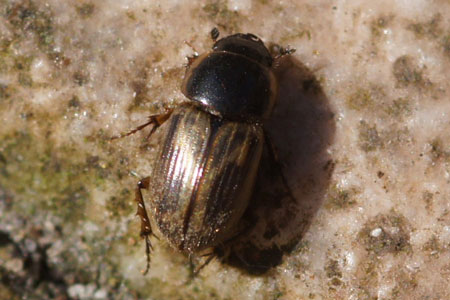 Aphodius spec. Genus Aphodius. Family Scarabs, scarab beetles
(Scarabaeidae).
Aphodius spec. Genus Aphodius. Family Scarabs, scarab beetles
(Scarabaeidae).
This dung beetle (family Aphodius) is a small beetle. There are a number of species, which are
similar. There are small differences such as the pattern on the elytra.
Photo 27-3-2011. |
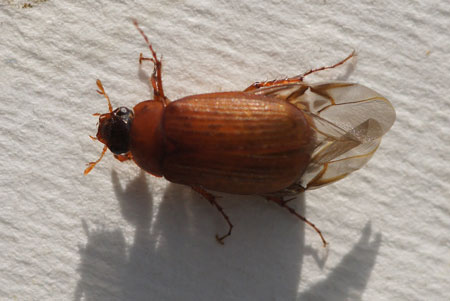 ..
Serica brunna. Family Scarabs, scarab beetles
(Scarabaeidae). ..
Serica brunna. Family Scarabs, scarab beetles
(Scarabaeidae).
A brown beetle with a black head. They are are active in the evening and at night. By day they hide under stones and moss.
I found this bug when I took away some weeds from the garden.
The larvae (grubs) live two years before they pupate. They feed on plant roots (grasses, lilacs).
In some articles is written, they are harmful to lilacs. But in my garden I
notice nothing. Size 8-10 mm. Photo 27-7-2011. |
 .. ..
 Dune chafer (Anomala dubia). Family Scarabs, scarab beetles
(Scarabaeidae). In
the dunes about 4 km from our house..
Dune chafer (Anomala dubia). Family Scarabs, scarab beetles
(Scarabaeidae). In
the dunes about 4 km from our house..
Very variable in colour. Head and pronotum are usually metallic green. The
elytra can be brown, but also metallic green. If they have brown elytra, they resemble the
garden chafer, but they are less hairy and larger.
They are common on sandy soil. The larva or grub feeds on the roots of grasses. The beetle eats mainly from the leaves of the willow.
June-July. Length 12-15 mm.
Photos 25-6-2014. |
Click
beetles (Elateridae)
In the Netherlands there are about 70 species. They can flip themselves 30
cm in the air, when they are in danger. Sometimes they land on their back.
But that’s not a problem. They will flip again. A pointed projection
suddenly snaps, when the beetle arches its body. This causes a clicking
noise. Which species they are, is difficult to say.
The beetle eats vegetable food like nectar, pollen, thumbs and flowers
The
larvae are called wireworms. They feed on the roots of plants, and they
often cause much damage. This site gives you an idea of the different species:
click
beetles German site.
German: Schnellkäfer French: élateridés
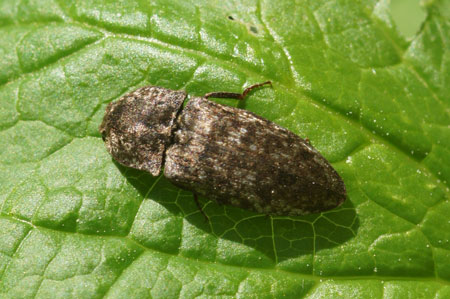 .. ..
 Agrypnus murina. Family Click beetles (Elateridae).
Agrypnus murina. Family Click beetles (Elateridae).
The body is gray-brown with light spots.
Length 10-17 mm.
Photos 11-5-2018. |
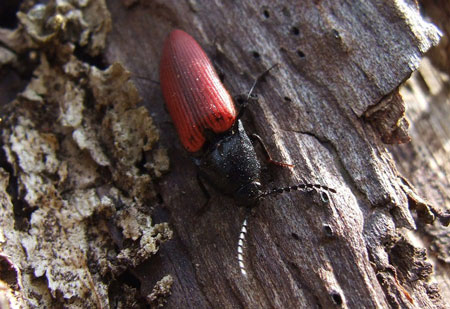 .. ..
 Ampedus spec. Family Click beetles (Elateridae).
Ampedus spec. Family Click beetles (Elateridae).
There are a number of very similar species.
I've never seen these beetles in the garden. In April I saw some Ampedus
click beetles in the dunes not far from my house.
Photos
24-4-2010. |
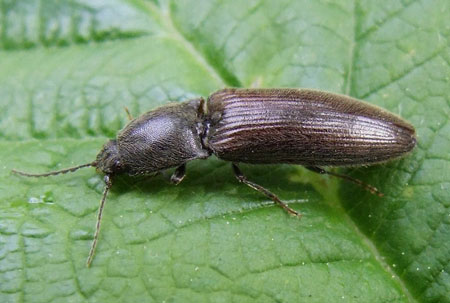 .. ..
 . .
 Athous haemorrhoidalis Family
Click beetles (Elateridae).
Athous haemorrhoidalis Family
Click beetles (Elateridae).
Length: 10-14 mm. Photos: 23-5-2009. End April tot begin July. |
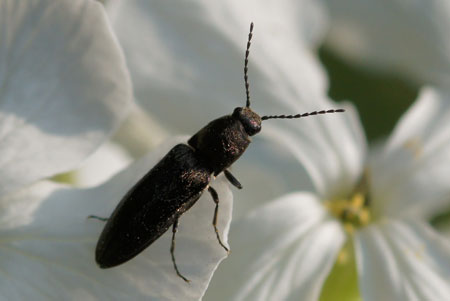 .. ..
 . .
 . .
 Cidnopus aeruginosus Family
Click beetles (Elateridae).
Cidnopus aeruginosus Family
Click beetles (Elateridae).
Distinguished by the hairs on the pronotum, which grow forward. See detail
photo. Photos 23-4-2011. |
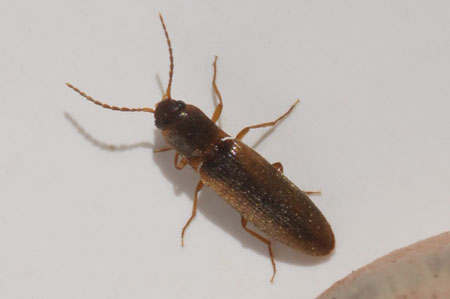 .. ..
 Dalopius marginatus. Family Click beetles (Elateridae).
Dalopius marginatus. Family Click beetles (Elateridae).
Brown with a striking dark stripe in the middle of the elytra.
Length 6-8 mm. Looks like a Adrastus- and a small Agriotes-species. Photos
23-4-2018. |
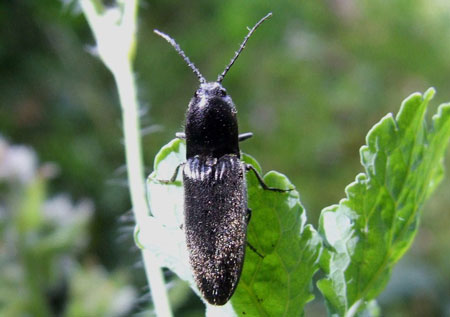 .. ..
 Hemicrepidius cf niger.
Family
Click beetles (Elateridae). cf: probably.
Hemicrepidius cf niger.
Family
Click beetles (Elateridae). cf: probably.
Length: 10-14,5 mm. It is very similar to
Hemicrepidius Hirtus. Photo 2-7-2012 right: The brown form. |
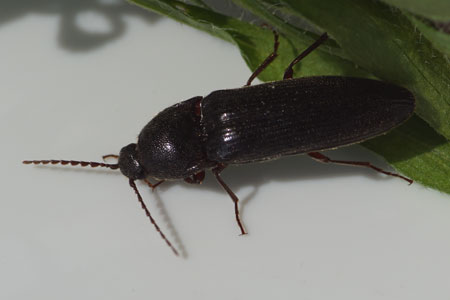 .. ..
 . .
 Melanotus. Family
Click beetles (Elateridae).
Melanotus. Family
Click beetles (Elateridae).
Maybe Melanotus villosus. It has claws with teeth and a length of 13-19 mm. The teeth are not visible in these photos. So I do not know. The cutter on the photo is approximately 19 mm.
Here
the differences between the different species are described. Photo
25-6-2019. |
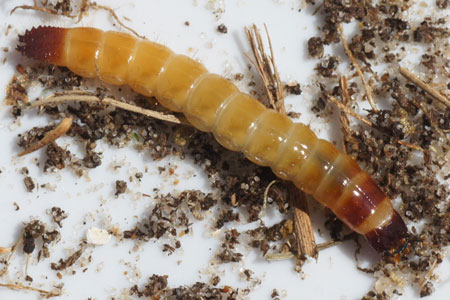 Larva of a click beetle. Also
called wireworm. In
the dunes about 4 km from our house.
Larva of a click beetle. Also
called wireworm. In
the dunes about 4 km from our house.
Probably a larva of a Agrypnus murina. Determining the
wireworms isn't easy. The shape of the rear end is slightly different in shape for the
larvae of the species.
Wireworms live on plant roots and therefore they can be harmful. However, the larvae of the Agrypnus murina also live on other insects and larvae. |
Jewel
beetles or metallic wood-boring beetles (Buprestidae).
Most of the family jewel beetles have a beautiful metallic
colour.
There are more than 15,000 species in the world. The shape is very
recognizable. (oblong, narrower rear end) Most jewel beetles live in the
tropics.
The larvae look a bit like a tadpole and they live under the bark. They
can cause much damage.
Pill beetles (Byrrhidae).
If these beetles retract their head and legs, they resemble a pill. (or a seed). See the small picture. They feed on mosses. Small to medium 1 - 10 mm.
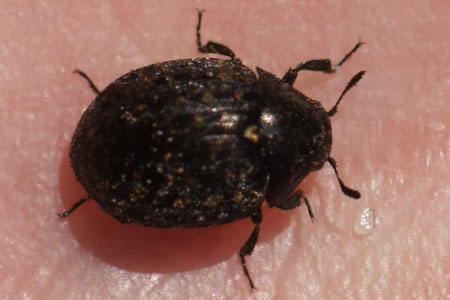 .. ..
 Cytilus sericeus synonym Cytilus
auricomus. Family Pill beetles (Byrrhidae). In the dunes about 4 miles from our house.A round oval beetle. On the elytra you see brown, metallic green and bronze-like colors. The beetle in the picture is quite dark.
Cytilus sericeus synonym Cytilus
auricomus. Family Pill beetles (Byrrhidae). In the dunes about 4 miles from our house.A round oval beetle. On the elytra you see brown, metallic green and bronze-like colors. The beetle in the picture is quite dark.
In humid areas with moss. Length 4,5-5,5 mm.
Photos 19-5-2014. |
Checkered beetles (Cleridae).
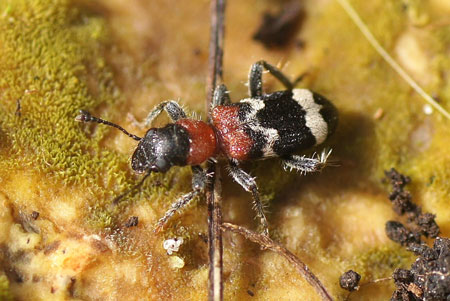 .. ..
 . .
 . .
 Ant beetle, European Red-bellied Clerid
(Thanasimus formicarius). Family Checkered beetles (Cleridae).
Ant beetle, European Red-bellied Clerid
(Thanasimus formicarius). Family Checkered beetles (Cleridae).
I see them in the dunes, but this ant beetle was
in the kitchen near the window. After a few photos I released it.
Elytra black with white bands. The front part of the elytra and the pronotum is red. The head, antennae and legs are black. It looks a lot like a big ant.
Both larvae and beetles are predators. They prey on bark beetles and other insects living on the bark of trees. They
live in coniferous forests.
Length 7-10 mm. Europe, Asia, North Africa. Photos 8-4-2015. German:
Ameisenbuntkäfer, Ameisenbuntkäfer.
|
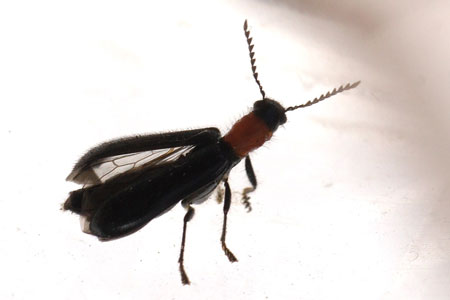 .. ..
 Tillus elongatus. Family Checkered beetles (Cleridae).
Tillus elongatus. Family Checkered beetles (Cleridae).
It was trapped in the greenhouse and fled unfortunately before I had made a good photograph. You do not see them often because they live hidden (often dead wood). It is a slender cylindrical beetle. Males are
totally black. The females have a red pronotum and blue black elytera.
Both larvae and beetles are predators. They feed
on larvae of insects like woodworms (Anobiidae) that live on / in the bark of trees. They
live in deciduous and mixed forests.
Length 7-10 mm. Europe. Photos 4-7-2015.
German: Buchen-Buntkäfer, Holzbuntkäfer, Laubholz-Buntkäfer.
|
Fire-coloured beetles (Pyrochroidae).
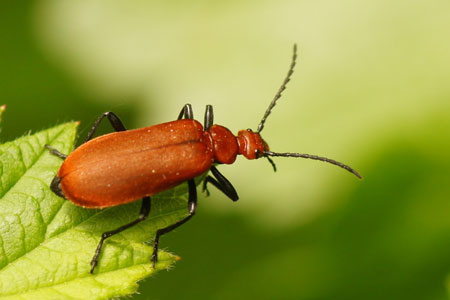 .. ..
 . .
 Cardinal beetle ( Pyrochroa serraticornis).
Family Fire-coloured beetles (Pyrochroidae).
Cardinal beetle ( Pyrochroa serraticornis).
Family Fire-coloured beetles (Pyrochroidae).
The head and shield of the bright red beetle is red. The abdomen, legs and antennae are black. It looks like the
Pyrochroa coccinea, but this beetle has a black head.
The larvae live under the bark of deciduous trees and feed on larvae of other insects. The adult beetle is
also a predator.
Length 10-14 mm. May-Juli. Europae. Photos 24-4-2014. German: Rotköpfige
Feuerkäfe. French: Cardinal rouge. |
Wedge-shaped beetles (Rhipiphoridae).
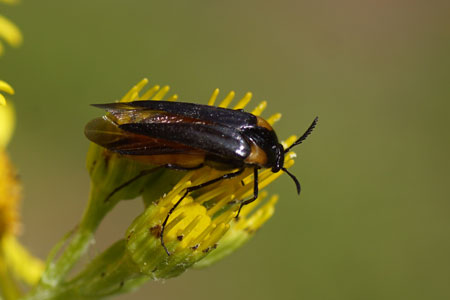 Wasp nest beetle (Metoecus paradoxus).
Family Wedge-shaped beetles (Rhipiphoridae).
Wasp nest beetle (Metoecus paradoxus).
Family Wedge-shaped beetles (Rhipiphoridae).
Looks like a gnat or wasp. With narrow pointed elytra that do not completely cover the wings and orange abdomen. It has feathered antennae. The female lays her eggs on rotting wood. When a wasp uses that wood for its nest, the beetle larva lifts to the nest, where it parasitizes. Length about 10 mm.
July-October. Europe. Photos 7-18-2020.
|
I want to thank everyone, who has helped me (waarneming.nl)
to identify. In particular, Jan Cuppen, Theodoor Heijerman and Toon Keukelaar.
Nederlands /
Dutch
 
Subpage beetles: Ground
beetles (Carabidae)
Leaf
beetles (Chrysomelidae)
Snout
beetles, weevils Longhorn
beetles, similar to longhorn beetles
Ladybirds,
Ladybugs, Coccinellidae
Rove
beetles (Staphylinidae)
Small
beetles
Subpage France: Insects
France
|
